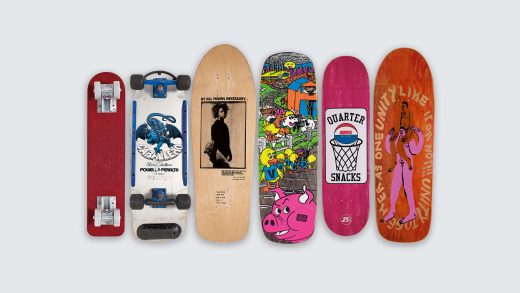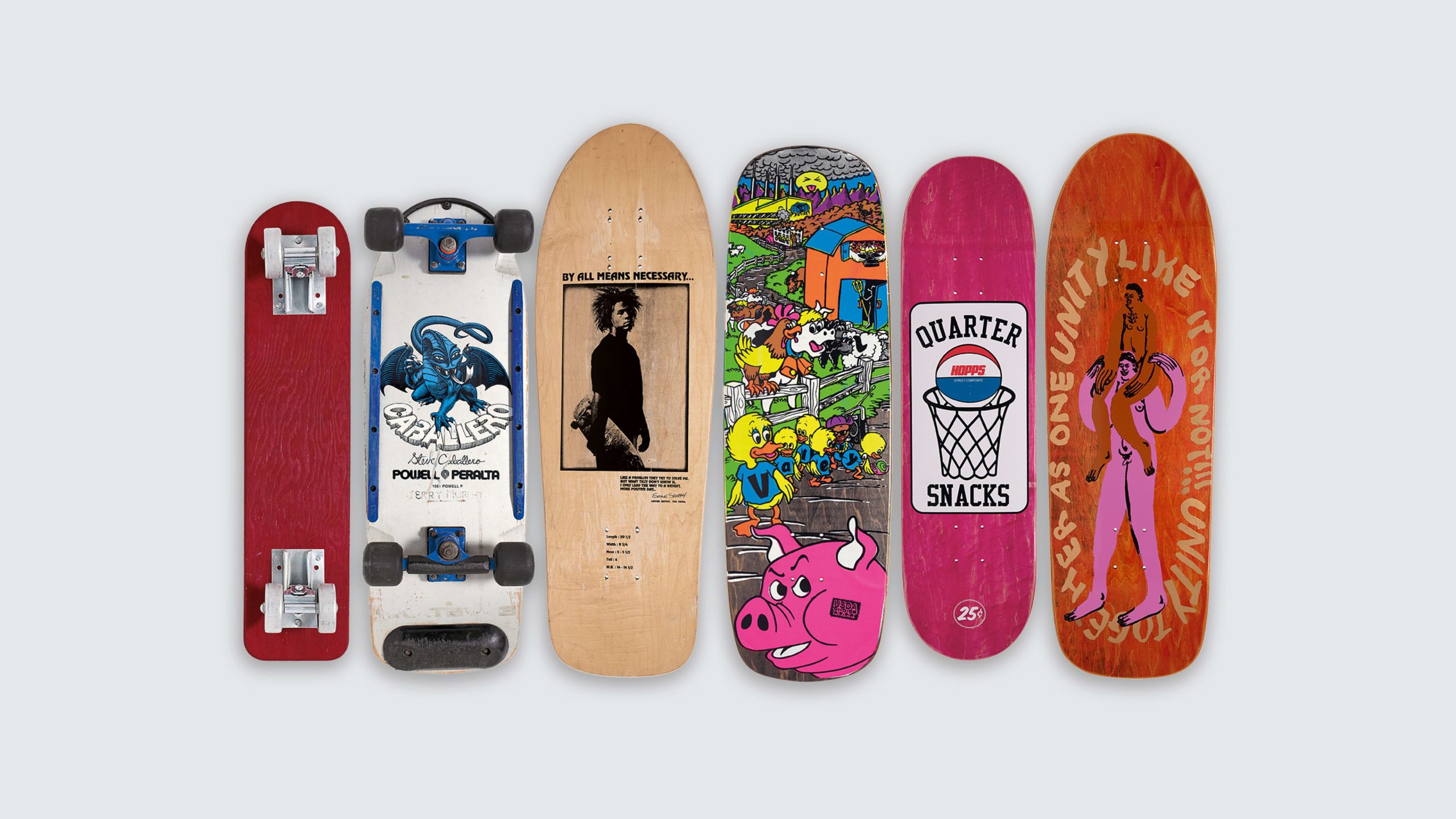How the skateboard became a ‘perfected design’
How the skateboard became a ‘perfected design’
The history of skateboard design is a wild ride. This book gives it a thoroughly illustrated overview.
BY Nate Berg
The skateboard has had a wild ride. From its DIY beginnings in the 1950s to its counterculture heyday in the ’80s and ’90s to its inclusion in the 2020 Summer Olympics, skateboarding has been variously considered a sport, a scourge, and a business.
Throughout that time, the skateboard itself has undergone a similarly remarkable physical transformation, changing shape with new materials, new uses, and new cultural associations. The evolution of the skateboard’s design is the subject of the new book Skateboard, by Jonathan Olivares and published by Phaidon. Tracking the look and form of the skateboard, the book covers the unique design history of an object that has changed in major and subtle ways over the past seven decades.
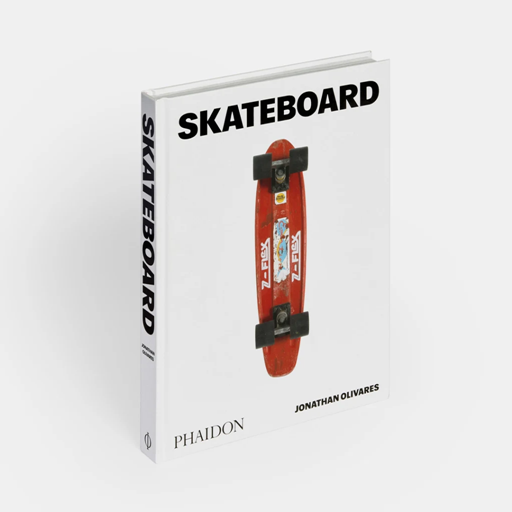
Olivares is an industrial designer and senior vice president of the furniture brand Knoll, as well as a longtime skateboarder. In Skateboard, he applies a designer’s keen eye to the minutia of fluctuating board shapes, hardware forms, and wheel technology, and the book’s hundreds of scale photographs track the skateboard’s development like biological specimens.
A previous book by Olivares took a similar approach. In A Taxonomy of Office Chairs, Olivares follows more than 150 years of office chair designs, focusing specifically on the small ways the product’s design has been changed or improved over time. Skateboard is naturally more playful, and the straight-on photos of boards and wheels are coupled with action shots of people throughout the decades pushing skateboards to new extremes.
The book is officially out on May 22. An accompanying exhibition at the London Design Museum runs through May 19. Here, Olivares explains why the skateboard is such a good object to document in this form, and why the design is arguably perfect.
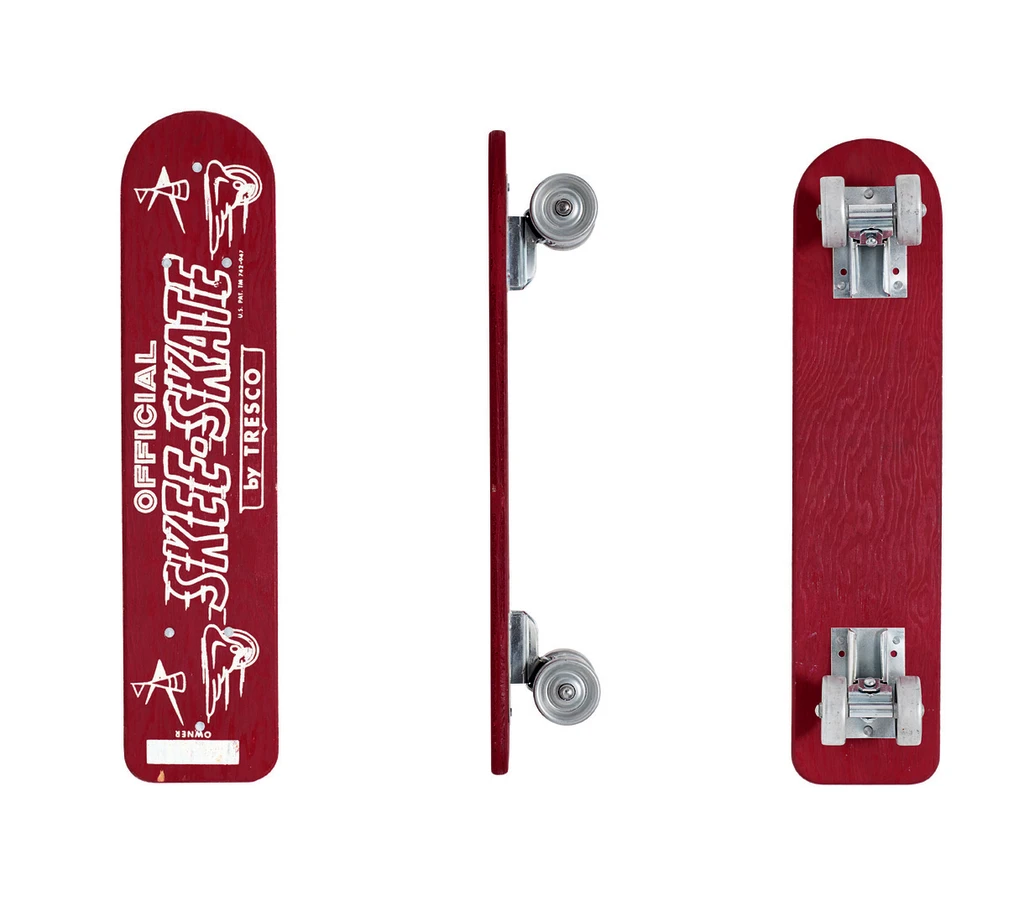
Why focus on skateboards in particular?
Skateboarding is a foundation for my design practice. Through skateboarding, I discovered architecture, photography, film making, ramp construction, and an attitude of subversion, appropriation, and innovation. The skateboard has a rich and storied design history that I wanted to explore in depth and learn more about. So the exhibition and book merge all of these loves of mine: the interplay of industrial design, skateboarding, and architecture, and packages this knowledge up for the tourists and the purists, as Virgil Abloh put it.
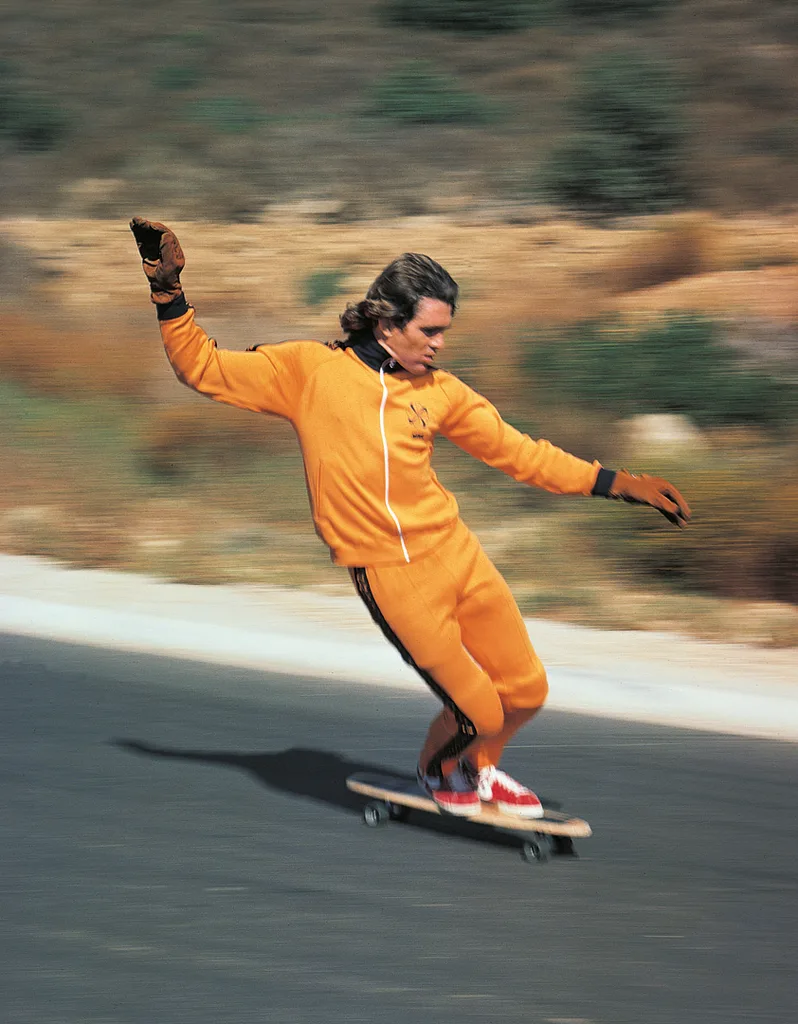
What are some of the key moments in the evolution of the skateboard?
The key moments are when innovations in skateboard design trigger innovations in skateboarding, or vice versa. The urethane wheel and precision bearing, introduced in the early 1970s, enabled greater speed, grip, and durability, which prompted rapid advancement in trick development. In the late ’70s, as skaters rode faster and bigger, boards widened to provide more stability, and the wider boards in turn enabled even faster and bigger tricks.
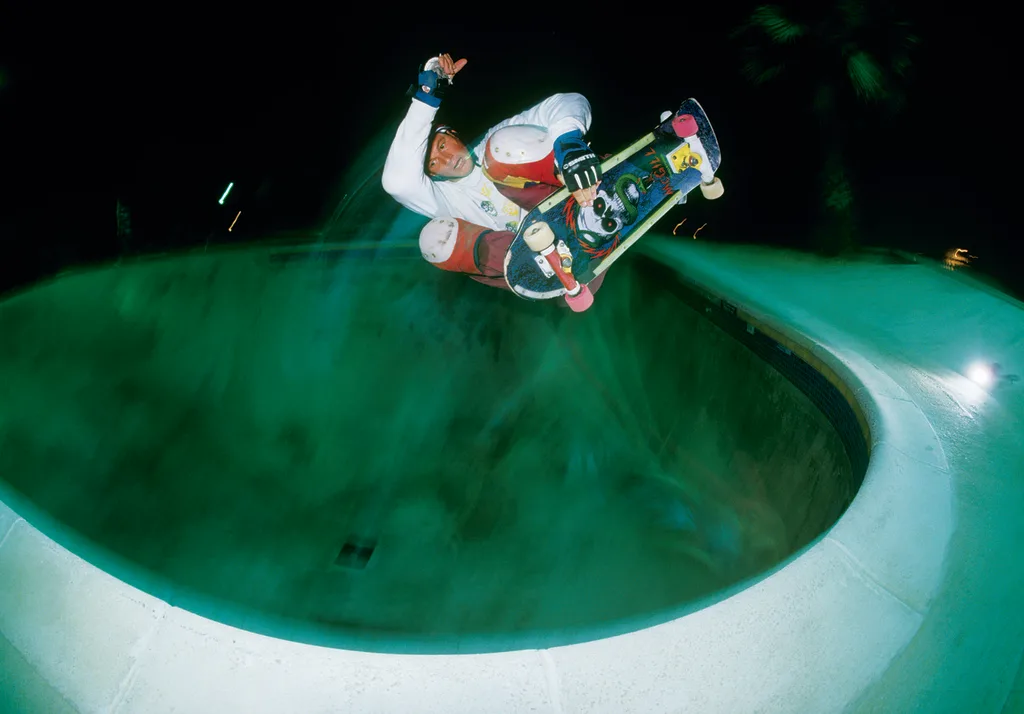
In the late ’80s, as skaters began skating fakie and switch stance, boards were designed more symmetrically, which further enabled fakie and switch skating. The dance between skateboard design and skateboarding goes on and on, until they reach maturity in the mid ’90s.
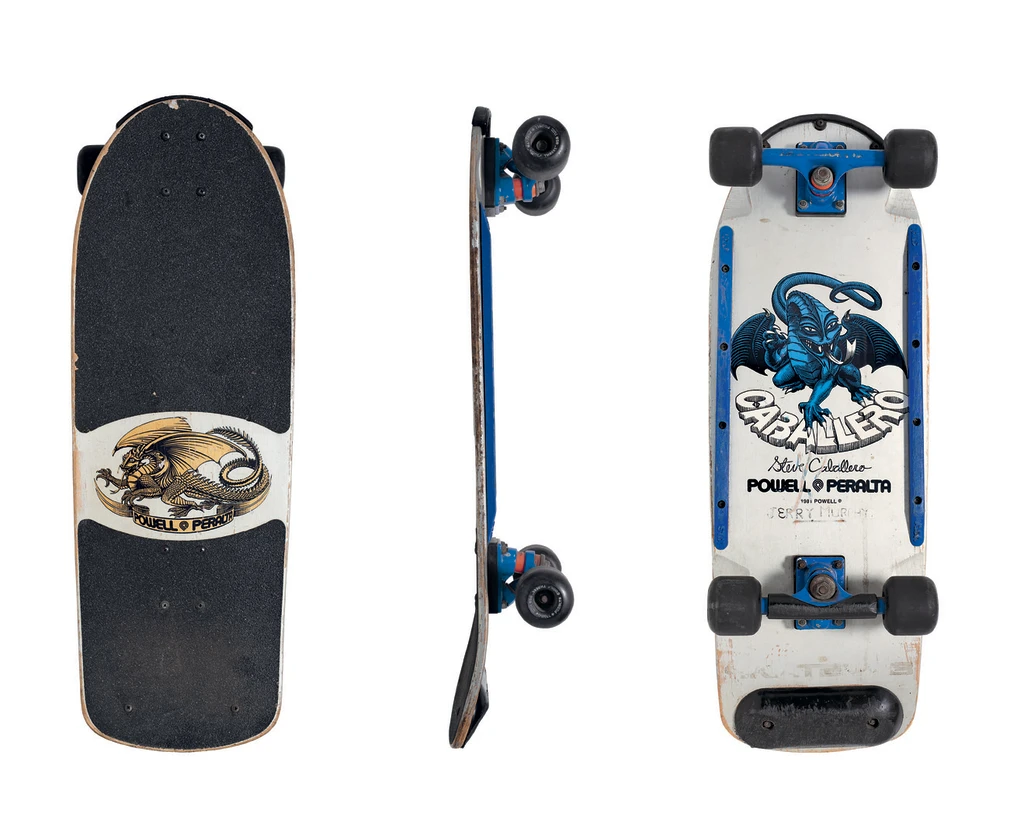
It could be easy to look at a skateboard from 2024 and think, “OK, they’ve figured it out, not much more to do here.” Can the skateboard still be improved upon, subverted, or taken in new directions?
The phrase “don’t fix it if it isn’t broken” applies today. Like the basketball, the skateboard is a perfected design. Over the last couple of decades the innovations have been subtle: perforated grip tape that allows application without the formation of bubbles, or hollow core hardware that shaves off fractions of an ounce of weight. Today skaters can buy virtually any imaginable set up from every era of skateboarding, tailored to their individual style of skating.
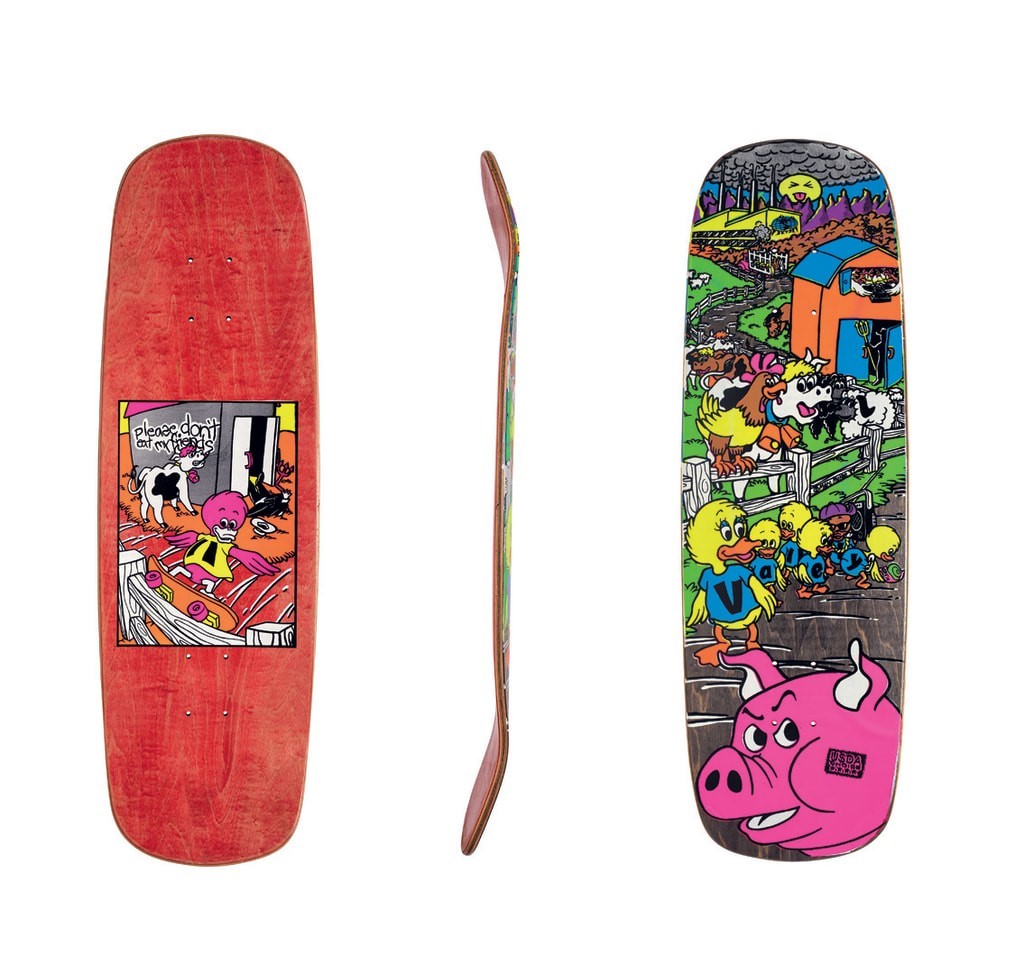
What are your favorite models in the book? Why do they stand out to you?
Every skater has a particular fondness of the era in which they started skating. For me it was the very early ’90s, characterized by slick bottom egg-shaped boards and tiny wheels. Sean Sheffey’s 1992 “Troll Doll” slick deck made by Plan B, and the 1992 Six-pack of wheels made by Real are emblematic of this era.
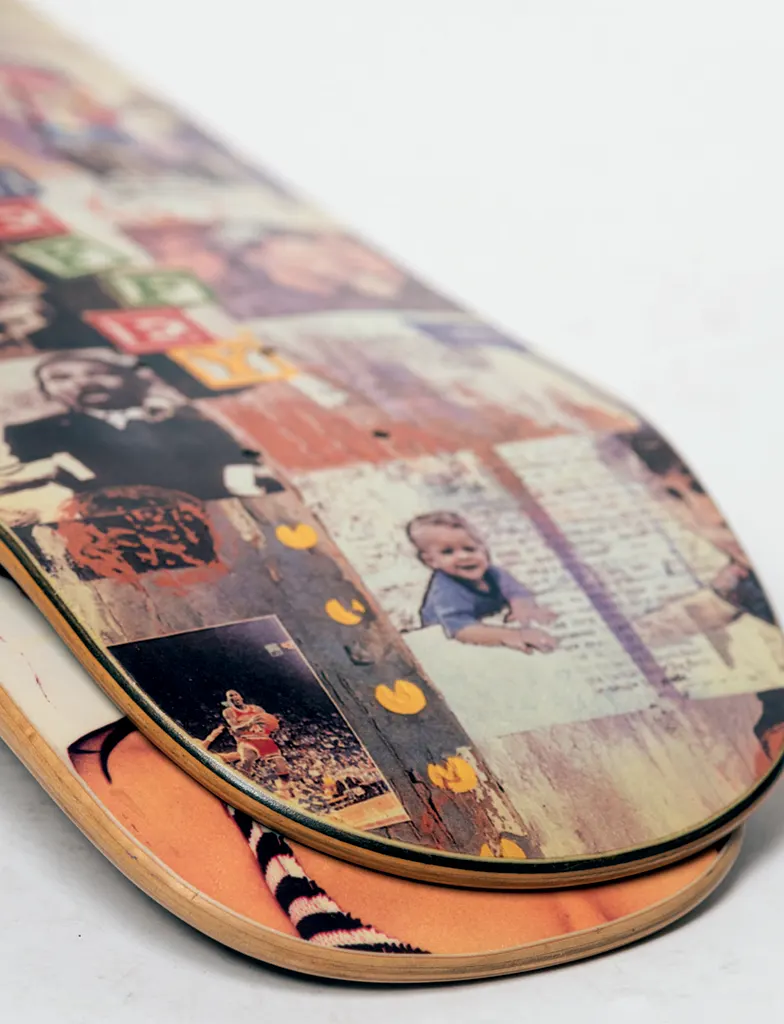
This was a time of rapid progression in skateboarding, as technical street skating was developing, and urban plazas became hotbeds for innovation. Thanks to small batch productions that have recently brought back shapes from the past, I’m able to relive my adolescence skating newly reintroduced egg-shaped boards.
An example of this is Chico Stix 2023 deck, which I bought two of, one for the book and exhibition, and one to skate. Chico Stix sent out the board with a set of tiny 49mm wheels, so my early ‘nineties’90s set-up is complete. Honestly, it’s hard for me to skate anything else at this point. It’s pure bliss.
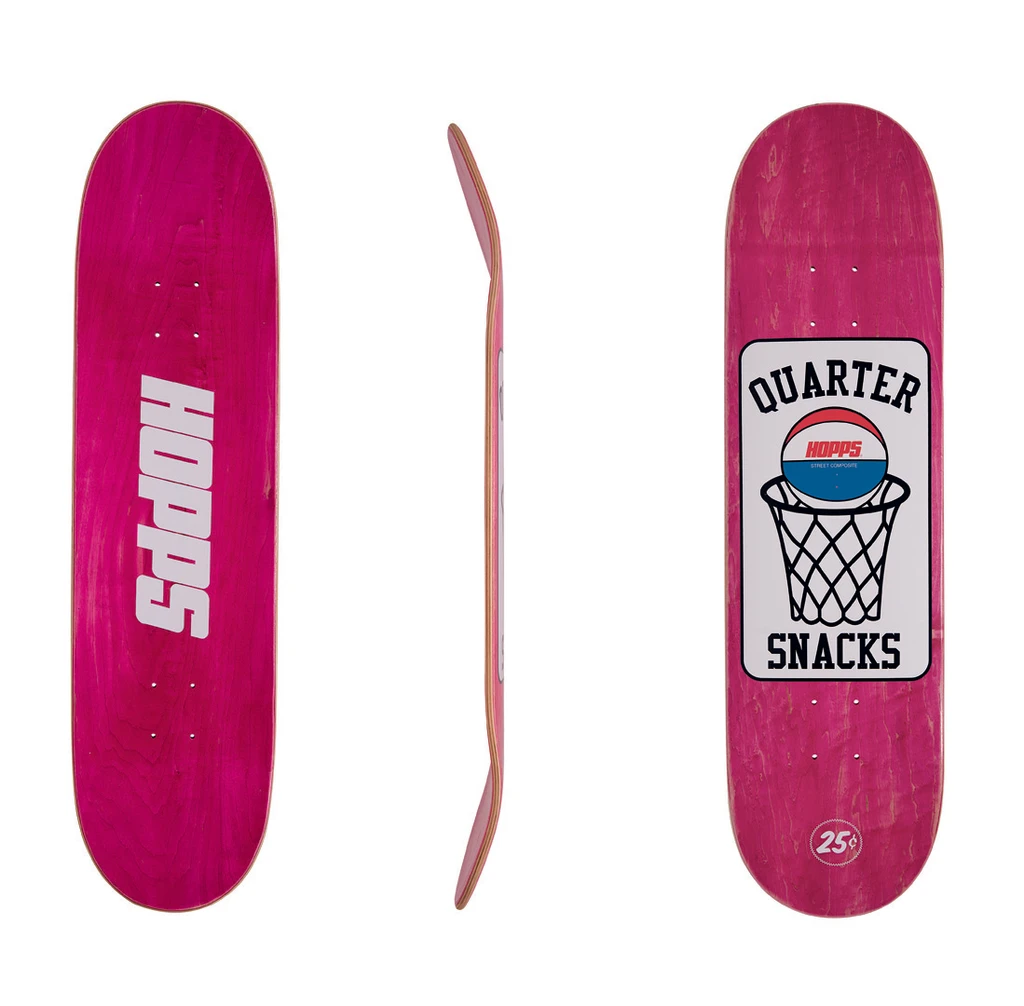
There are some familial resemblances between this book and your earlier book on office chairs. How did tracking the evolution of office chairs lay the foundation to looking at the ways other objects have gone through this kind of multi-decade iteration process?
The books are absolutely connected. Both books chronicle specific material cultures, and employ taxonomic and evolutionary filters. However, when I wrote the book about office chairs I was living a siloed existence, design was my work and skateboarding was something I loved as a hobby. Today I see no distinction between the rigor I try to bring to my design work and the humor and attitude that skateboarding imparted on me. The two mentalities have been totally reconciled. So, Skateboard comes from a place of greater maturity, complexity and paradox.
ABOUT THE AUTHOR
Fast Company
(20)

